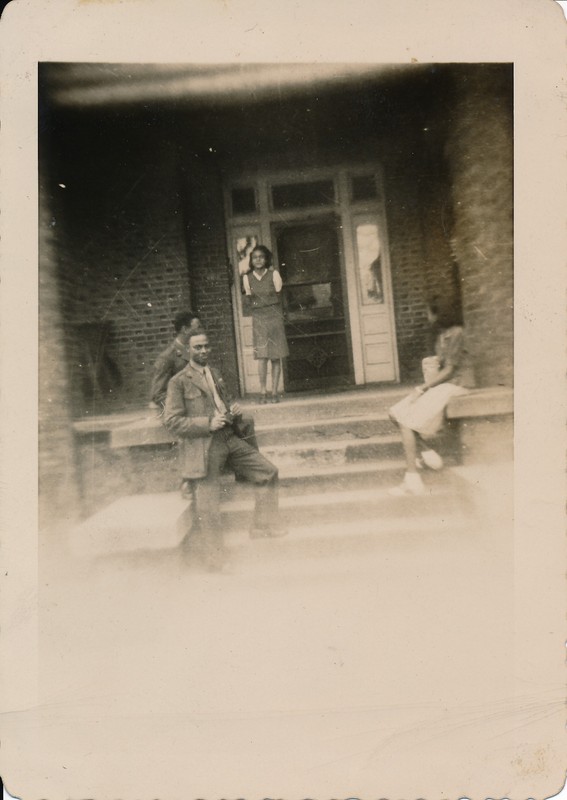Lewis Hotel & Lewis Tailor ( Deluxe Hotel )
Introduction
Text-to-speech Audio
This site was listed from 1941 and 1947-1955. In the Green Book, this site was originally named the Lewis Hotel/ Lewis (Tailor) and then later listed as the Deluxe Hotel.
Images
Image of Hattie and her husband building the hotel.

Image of people sitting outside of Lewis Hotel

Image of owner Hattie Wooten Lewis

Image of an Ad for the Deluxe Hotel

Beadie Lucille Griswold at a National Hotel Association Meeting in 1950.

Postcard of Deluxe Hotel

Backstory and Context
Text-to-speech Audio
Hattie Lewis was the owner of the Lewis Hotel located at 220 East Cabarrus Street in Raleigh. She owned it until her death. Hattie’s husband, Needham Lewis, assisted with building the hotel until he left for other opportunities in DC. Hattie nieces, Gloria Griswold Jeffers, Fannie Griswold and Beadie Lucille Griswold, moved from their home in Dudley, NC, to assist their aunt in managing the hotel while attending classes at Shaw University.
Hattie Lewis left the hotel to Beadie Lucille Griswold who changed the name to the DeLuxe Hotel.
Tupper Memorial Baptist Church was built on the corner of Blount and Cabarrus Streets in 1912 and expanded to East Cabarrus Street by purchasing lots for parking. These properties were Lewis’ Tailor and Mrs. L.B. Yeargan’s Tourist Home. The structure dated back to the 1920s when Needham and Hattie Lewis operated it as a hotel, originally named the Lewis Hotel. The hotel had 26 rooms and providing lodging for Fats Waller, Louis Armstrong’s band, Clara Ward, and Nat King Cole’s band. The hotel was renamed the Deluxe Hotel after Mrs. Lewis passed. Fire destroyed the building in 1992.
Sources
Since 2017, the NC African American Heritage Commission, completed research on North Carolina’s Green Book sites. The findings have been compiled in this interactive web portal which invites visitors to explore each site in depth through historical vignettes, stories, and images. The project also includes a traveling and virtual exhibition produced to highlight the experiences of African American travelers during the Jim Crow era in North Carolina.
This project was made possible in part by the Institute of Museum and Library Services. The views, findings, conclusions or recommendations expressed in this program do not necessarily represent those of the Institute of Museum and Library Services.
